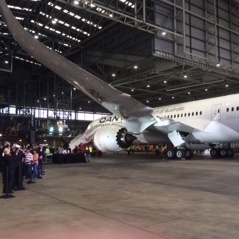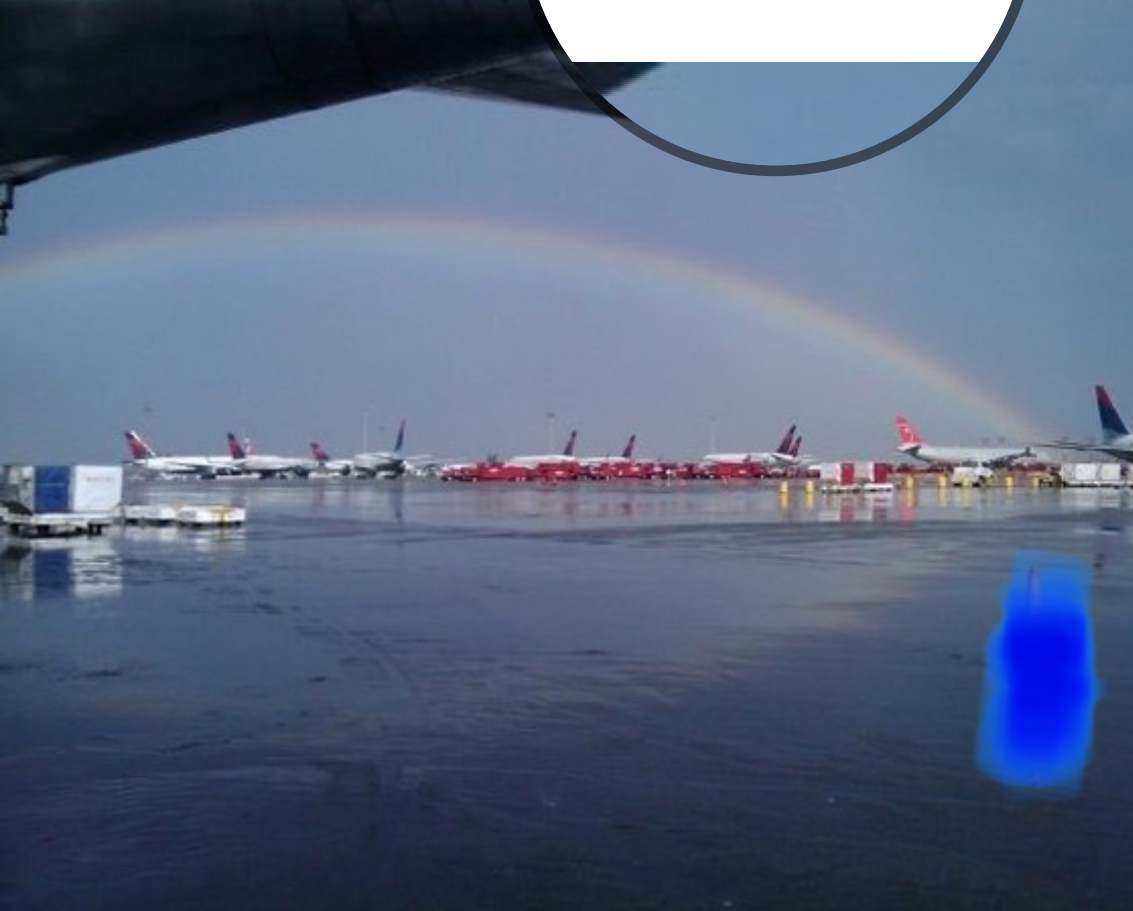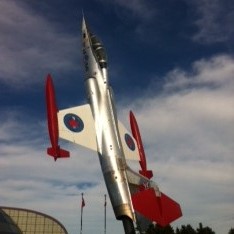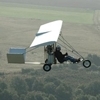Moderators: richierich, ua900, PanAm_DC10, hOMSaR
Re: AF66 CDG-LAX (A388-F-HPJE) diverts to Goose Bay (YYR) with an uncontained engine failure to #4 engine
Here is the ATC recording for the landing
https://www.youtube.com/watch?v=PrbxtVPY0rE
https://www.youtube.com/watch?v=PrbxtVPY0rE
Re: AF66 CDG-LAX (A388-F-HPJE) diverts to Goose Bay (YYR) with an uncontained engine failure to #4 engine
Gonzalo wrote:lowbank wrote:ukair wrote:surely with a modern aircraft like this an engine should not explode without warning, the multitude of engine instruments oil temperature, vibration etc should warn the pilots the engine is in trouble so it can be shut down, the investigation should include if there were any unusual engine parameters showing on the cockpit engine instruments in the period before the engine exploded
A failure of this nature will happen in milli seconds.
I think it's a long time since this type of failure happened.
If I remember correctly the rotor disk of UA232 was flying for years on the engine 2 before blowing up.
The microscopic discontinuity was there all the time since the disk was manufactured, and the quality control never saw it. Periodic inspections performed later with the flawed disk already in service never saw the original discontinuity nor the crack that was originated later...until the engine blowed up. We know all this after the investigation but with UA 232 we had luck and a good farmer who found the pieces of disk and call the authorities, post failure examination provided the answers. With this AF flight cruising above a vast glacier, with population close to zero, the chance of recovering pieces to analyze will be very low...
Rgds.
G.
You are correct and lessoned were learnt from it, all penetrant (ndt) lines now have to have a drying oven in the line post cleaning as it was thought that water was in the crack post cleaning and that did not allow the penetrant to get into the crack and therefore it went undetected. There were lots of other things but that's the one I always remember when stood next to an ndt line.
Re: AF66 CDG-LAX (A388-F-HPJE) diverts to Goose Bay (YYR) with an uncontained engine failure to #4 engine
The Canadian TSB has dispatched a team of investigators to YYR to begin investigation of AF66
http://avherald.com/h?article=4af15205&opt=0
http://avherald.com/h?article=4af15205&opt=0
Re: AF66 CDG-LAX (A388-F-HPJE) diverts to Goose Bay (YYR) with reports of suspected damage to leading edge above #4 engi
jetwet1 wrote:rbavfan wrote:having an A340 would have made no difference in the Air Transat flight that landed in the Azores after they ran out of fuel due to what I believe was ruled a failure to load the right amount of fuel for the flight. 4 engines would not be working vs 2.
Are you thinking of the Gimli glider ? And that was a 767, so 2 engines.
https://en.wikipedia.org/wiki/Gimli_Glider
No he's thinking about the much more dramatic Air Transat Flight 236 : https://en.wikipedia.org/wiki/Air_Transat_Flight_236
A fuel leak caused the A330 to lose power in the middle of the Atlantic.
Those canadians sure know how to glide airliners !
-

- BenTheGreat97
- Posts: 46
- Joined:
Re: AF66 CDG-LAX (A388-F-HPJE) diverts to Goose Bay (YYR) with an uncontained engine failure to #4 engine
bunumuring wrote:Hey guys,
Like everyone else, I'm shocked....
Could it possibly have been some kind of bomb blast? As in terrorism? I'm no expert, but could it have been some kind of device somehow planted inside the engine/cowling? That might explain why it happened in cruise over 'no man's land' .... A 'timed' explosion?
France has unfortunately endured quite a bit of terrorism in the last few years.
Congrats to the Air France crew!
Bunumuring
The answer is no.
-

- 2Holer4Longhaul
- Posts: 374
- Joined:
Re: AF66 CDG-LAX (A388-F-HPJE) diverts to Goose Bay (YYR) with reports of suspected damage to leading edge above #4 engi
uta999 wrote:Finn350 wrote:zeke wrote:
They do happen, BA 777 into LHR, SQ A330 to PVG, BI 787 into MNL.
And US Airways A320 to Hudson River... (although neither BA or US Airways was at cruise altitude).
Even quads sometimes find themselves gliding, but what's also interesting is the 5 stopovers en-route to Auckland.
British Airways Flight 9, sometimes referred to by its callsign Speedbird 9 or as the Jakarta incident,[1] was a scheduled British Airways flight from London Heathrow to Auckland, with stops in Bombay, Madras, Kuala Lumpur, Perth, and Melbourne.
British Airways Flight 9
British Airways Boeing 747-200 Silagi-1.jpg
G-BDXH, the aircraft involved in the accident, photographed at San Francisco Airport in 1980.
Accident summary
Date 24 June 1982
Summary Quadruple engine flameout due to blockage by volcanic ash
Site near Mount Galunggung
West Java, Indonesia
Passengers 248
Crew 15
Fatalities 0
Injuries (non-fatal) 0
Survivors 263 (all)
Aircraft type Boeing 747-236B
Aircraft name City of Edinburgh
Operator British Airways
Registration G-BDXH
Flight origin London Heathrow Airport
London, England
1st stopover Sahar Airport
Bombay, India
2nd stopover Madras Airport
Madras, India
3rd stopover Sultan Abdul Aziz Shah Airport
Kuala Lumpur, Malaysia
4th stopover Perth Airport, Perth, Western Australia, Australia
Last stopover Melbourne Airport, Melbourne, Victoria, Australia
Destination Auckland Airport
Auckland, New Zealand
On 24 June 1982, the route was flown by the City of Edinburgh, a 747-236B. The aircraft flew into a cloud of volcanic ash thrown up by the eruption of Mount Galunggung (approximately 180 kilometres (110 mi) south-east of Jakarta, Indonesia), resulting in the failure of all four engines. The reason for the failure was not immediately apparent to the crew or air traffic control. The aircraft was diverted to Jakarta in the hope that enough engines could be restarted to allow it to land there. The aircraft glided out of the ash cloud, and all engines were restarted (although one failed again soon after), allowing the aircraft to land safely at the Halim Perdanakusuma Airport in Jakarta.
The crew members of the accident segment had boarded the aircraft in Kuala Lumpur, while many of the passengers had been aboard since the flight began in London.[2]
Wikipedia
But not to twins at cruise.
Re: AF66 CDG-LAX (A388-F-HPJE) diverts to Goose Bay (YYR) with an uncontained engine failure to #4 engine
If it was the the #3 engine that plane may have crashed. The fan blade could have pierced the fuselage.
Re: AF66 CDG-LAX (A388-F-HPJE) diverts to Goose Bay (YYR) with an uncontained engine failure to #4 engine
DL757NYC wrote:If it was the the #3 engine that plane may have crashed. The fan blade could have pierced the fuselage.
what makes you think that??
To me it looks like the whole fan assembly came away as one piece.
it would have moved forward of the engine and then fallen away as it did with the no4 engine.
We will not know until they find it.
Re: AF66 CDG-LAX (A388-F-HPJE) diverts to Goose Bay (YYR) with an uncontained engine failure to #4 engine
How does Canada handle potential visa violations from any passengers who normally would not qualify for visa-less entry? I vaguely remember an uproar about 10 years ago, when Canada began arresting non-Western/ non-white passengers on mainly Europe-Mexico/S.A flights - that happened to divert into Canada. Wonder if any non-Western passenger on AF66 could confirm if Canada stamped their passports with deportation or invalid entry notices?
Re: AF66 CDG-LAX (A388-F-HPJE) diverts to Goose Bay (YYR) with an uncontained engine failure to #4 engine
I can’t imagine a scenario where someone denied entry to Canada is allowed in the US.
-

- OldAeroGuy
- Posts: 3928
- Joined:
Re: AF66 CDG-LAX (A388-F-HPJE) diverts to Goose Bay (YYR) with reports of suspected damage to leading edge above #4 engi
rbavfan wrote:Btblue wrote:Here's a side on view of the engine without cowlings etc. Appears the whole of the front section has been taken away (coloured brown in the photo).
It would apear that the fan sroud thats composite and supposedly tested to survive fan failure, does not survive.
The fan case is designed to survive failure of a single fan blade combined with the effect of that single fan blade on any subsequent fan blades, usually two or three additional blades.
The fan case is not designed to survive the loss of the entire fan.
Re: AF66 CDG-LAX (A388-F-HPJE) diverts to Goose Bay (YYR) with an uncontained engine failure to #4 engine
Prost wrote:I can’t imagine a scenario where someone denied entry to Canada is allowed in the US.
Probably only if that person is a US Citizen with a criminal record in the USA. Bradley/Chelsea Manning was recently denied entry to Canada on account of his/her criminal record in the United States.
Re: AF66 CDG-LAX (A388-F-HPJE) diverts to Goose Bay (YYR) with an uncontained engine failure to #4 engine
lowbank wrote:Gonzalo wrote:lowbank wrote:
A failure of this nature will happen in milli seconds.
I think it's a long time since this type of failure happened.
If I remember correctly the rotor disk of UA232 was flying for years on the engine 2 before blowing up.
The microscopic discontinuity was there all the time since the disk was manufactured, and the quality control never saw it. Periodic inspections performed later with the flawed disk already in service never saw the original discontinuity nor the crack that was originated later...until the engine blowed up. We know all this after the investigation but with UA 232 we had luck and a good farmer who found the pieces of disk and call the authorities, post failure examination provided the answers. With this AF flight cruising above a vast glacier, with population close to zero, the chance of recovering pieces to analyze will be very low...
Rgds.
G.
You are correct and lessoned were learnt from it, all penetrant (ndt) lines now have to have a drying oven in the line post cleaning as it was thought that water was in the crack post cleaning and that did not allow the penetrant to get into the crack and therefore it went undetected. There were lots of other things but that's the one I always remember when stood next to an ndt line.
I’m trained in the Penetrant Test and yes, it helps when is properly executed and evaluated, but only can catch discontinuities open to surface so penetrant can use its capillarity carachteristics and mark the defect. But many times the discontinuity is located at internal layers of the metal piece. For those, ultrasonic test is the way to go.
Rgds
G
Re: AF66 CDG-LAX (A388-F-HPJE) diverts to Goose Bay (YYR) with an uncontained engine failure to #4 engine
Gonzalo wrote:lowbank wrote:Gonzalo wrote:If I remember correctly the rotor disk of UA232 was flying for years on the engine 2 before blowing up.
The microscopic discontinuity was there all the time since the disk was manufactured, and the quality control never saw it. Periodic inspections performed later with the flawed disk already in service never saw the original discontinuity nor the crack that was originated later...until the engine blowed up. We know all this after the investigation but with UA 232 we had luck and a good farmer who found the pieces of disk and call the authorities, post failure examination provided the answers. With this AF flight cruising above a vast glacier, with population close to zero, the chance of recovering pieces to analyze will be very low...
Rgds.
G.
You are correct and lessoned were learnt from it, all penetrant (ndt) lines now have to have a drying oven in the line post cleaning as it was thought that water was in the crack post cleaning and that did not allow the penetrant to get into the crack and therefore it went undetected. There were lots of other things but that's the one I always remember when stood next to an ndt line.
I’m trained in the Penetrant Test and yes, it helps when is properly executed and evaluated, but only can catch discontinuities open to surface so penetrant can use its capillarity carachteristics and mark the defect. But many times the discontinuity is located at internal layers of the metal piece. For those, ultrasonic test is the way to go.
Rgds
G
yep agreed, the only problem with ultrasonics is if the metal is in intimate contact it will not detect a discontinuity. If you get two 1 millimetre slips and ring them together, that's a twisting motion that makes them stick. I f you check them with ultrasonics it will read two mm even though you know they are not joined metallurgically. There is just no gaps so it reads 2 mm.
Re: AF66 CDG-LAX (A388-F-HPJE) diverts to Goose Bay (YYR) with reports of suspected damage to leading edge above #4 engi
Narfish641 wrote:HOLY CRAP!!! Looks like everything is gone besides the middle section. This is catastropic!
It landed safely. I wouldn't call that catastrophic.
Re: AF66 CDG-LAX (A388-F-HPJE) diverts to Goose Bay (YYR) with an uncontained engine failure to #4 engine
Prost wrote:I can’t imagine a scenario where someone denied entry to Canada is allowed in the US.
Hundreds of thousands of non-European people leave in France, have US visas but not Canadian visas. I can give you three close examples.
Re: AF66 CDG-LAX (A388-F-HPJE) diverts to Goose Bay (YYR) with an uncontained engine failure to #4 engine
Here's a higher quality close-up photo.
The leading edges clearly took a hit too.

https://twitter.com/twintair737/status/ ... 3063070720
The leading edges clearly took a hit too.

https://twitter.com/twintair737/status/ ... 3063070720
Re: AF66 CDG-LAX (A388-F-HPJE) diverts to Goose Bay (YYR) with an uncontained engine failure to #4 engine
Hagic wrote:Prost wrote:I can’t imagine a scenario where someone denied entry to Canada is allowed in the US.
Hundreds of thousands of non-European people leave in France, have US visas but not Canadian visas. I can give you three close examples.
And also, quite a few people who do not live in France fly AF to the USA. They may need a visa to enter the USA, and board such a flight, without any document allowing them to enter Canada...
-

- 2Holer4Longhaul
- Posts: 374
- Joined:
Re: AF66 CDG-LAX (A388-F-HPJE) diverts to Goose Bay (YYR) with reports of suspected damage to leading edge above #4 engi
BartSimpson wrote:2Holer4Longhaul wrote:Any AVGeeks may still get some good of this flight, as the 733 is a dying bird.
You must be really really really geeky if you'd enjoy a vintage B733 rather than a newer B738 after such an incident.
Yeah, I am. I do, however, pity the pax (who presumably are not)
Re: AF66 CDG-LAX (A388-F-HPJE) diverts to Goose Bay (YYR) with an uncontained engine failure to #4 engine
lowbank wrote:I have tried to think of a way to explain in fairly easy terms no people could understand why this is so unusual. So here goes, hope it works out.
Think of pulling an elastic band until it will not pull any more, that's kind of like the stresses at take off.
If we think of that band being stretched to 12 inches, then we let it back to 8 inches, that's our cruise stress position.
If the band does not break at max stress (12 inches), there is no physical reason it should break when only stretched to 8 inches( i.e. Cruise)
The stresses are not high enough to propagate any defects as it would have broken on take off.
So it's unusual as a failure mode.
All I can come up with as an idea is some sort of bearing failure causing the shaft to break. Other than that I am stumped.
I know nothing about engines but your posts do have me wondering...
I see how thrust is highest at take off and that this is very demanding on the engine but does that automatically mean that the stresses on all parts of the engines are least favorable? I have the feeling that things spinning at a high and constant speed are more stable or even have self stabilizing properties so that vibrations and thus dynamic loading could actually be less? What about certain frequencies of vibration/loading being worse than others?
It is my understanding that engines in cruise run at fairly constant settings and the electronics maintain these rather than chasing certain performance parameters? Otherwise this could momentarily cause higher/variable loading, during turbulence for example?
Does the lower air density at altitude compensate for the higher airplane and wind speeds or does this also put a lot of stresses on the engine parts in a direction that might be less favorable? What about low temperatures, would these effect the properties of the materials or even cause a temperature gradient from the hot engine core to colder parts exposed to the air stream thus introducing extra stresses?
Even though a plane is designed to perform under all thinkable conditions and some more, failures might be more likely at one or the other edges of its usual envelope rather than were the engine has to perform at its max by design? The swiss cheese model rather than a failure where one would expect it?
Just some thoughts that hopefully make a bit of sense.
Re: AF66 CDG-LAX (A388-F-HPJE) diverts to Goose Bay (YYR) with an uncontained engine failure to #4 engine
For the few that have made comments about it being a good thing this happened to a jet with 4 engines, you have to remember and consider the following:
2 jet engines out on a two holer, for the most part, your probably screwed though there are a few documented incidents where the plane was able to glide to safety.
2 engines out on a 4 engine passenger plane could spell doom, especially if its two engines on the same side of the wing. From what I understand and from what I've read, it depends on weight, altitude and a number of other factors. 4 engines doesn't necessarily mean your more safe than a plane with 2.
2 jet engines out on a two holer, for the most part, your probably screwed though there are a few documented incidents where the plane was able to glide to safety.
2 engines out on a 4 engine passenger plane could spell doom, especially if its two engines on the same side of the wing. From what I understand and from what I've read, it depends on weight, altitude and a number of other factors. 4 engines doesn't necessarily mean your more safe than a plane with 2.
-

- bunumuring
- Posts: 2849
- Joined:
Re: AF66 CDG-LAX (A388-F-HPJE) diverts to Goose Bay (YYR) with an uncontained engine failure to #4 engine
Hey guys,
Qantas temporarily grounded its A380s immediately after QF32.
I assume Air France has NOT done the same thing after this incident?
Thanks,
Bunumuring
Qantas temporarily grounded its A380s immediately after QF32.
I assume Air France has NOT done the same thing after this incident?
Thanks,
Bunumuring
Re: AF66 CDG-LAX (A388-F-HPJE) diverts to Goose Bay (YYR) with an uncontained engine failure to #4 engine
bunumuring wrote:Hey guys,
Qantas temporarily grounded its A380s immediately after QF32.
I assume Air France has NOT done the same thing after this incident?
Thanks,
Bunumuring
Don't think so. There currently are AF A380's in flight.
Re: AF66 CDG-LAX (A388-F-HPJE) diverts to Goose Bay (YYR) with an uncontained engine failure to #4 engine
ukair wrote:surely with a modern aircraft like this an engine should not explode without warning, the multitude of engine instruments oil temperature, vibration etc should warn the pilots the engine is in trouble so it can be shut down, the investigation should include if there were any unusual engine parameters showing on the cockpit engine instruments in the period before the engine exploded
I think you are right, and I suspect the pilots were getting indications of "something" with that engine. Just a feeling.
Having flown the LHR-LAX route (similar routing) literally dozens of times, and many others that cross in that region and just South of it. I look at how AF66 was tracking which would normally be a straight shoot over Greenland towards Hudson Bay, yet it had already turned southward before the coastline of Greenland, which normally it would not for the NA West Coast. This is more of an East Coast / Midwest destination heading, and for the most part (except for an extreme jetstream / winter weather) CDG- East Coast would not or barely touch Greenland.
Looking forward to the official preliminary findings.
Re: AF66 CDG-LAX (A388-F-HPJE) diverts to Goose Bay (YYR) with an uncontained engine failure to #4 engine
RJWNL wrote:lowbank wrote:I have tried to think of a way to explain in fairly easy terms no people could understand why this is so unusual. So here goes, hope it works out.
Think of pulling an elastic band until it will not pull any more, that's kind of like the stresses at take off.
If we think of that band being stretched to 12 inches, then we let it back to 8 inches, that's our cruise stress position.
If the band does not break at max stress (12 inches), there is no physical reason it should break when only stretched to 8 inches( i.e. Cruise)
The stresses are not high enough to propagate any defects as it would have broken on take off.
So it's unusual as a failure mode.
All I can come up with as an idea is some sort of bearing failure causing the shaft to break. Other than that I am stumped.
I know nothing about engines but your posts do have me wondering...
I see how thrust is highest at take off and that this is very demanding on the engine but does that automatically mean that the stresses on all parts of the engines are least favorable? I have the feeling that things spinning at a high and constant speed are more stable or even have self stabilizing properties so that vibrations and thus dynamic loading could actually be less? What about certain frequencies of vibration/loading being worse than others?
It is my understanding that engines in cruise run at fairly constant settings and the electronics maintain these rather than chasing certain performance parameters? Otherwise this could momentarily cause higher/variable loading, during turbulence for example?
Does the lower air density at altitude compensate for the higher airplane and wind speeds or does this also put a lot of stresses on the engine parts in a direction that might be less favorable? What about low temperatures, would these effect the properties of the materials or even cause a temperature gradient from the hot engine core to colder parts exposed to the air stream thus introducing extra stresses?
Even though a plane is designed to perform under all thinkable conditions and some more, failures might be more likely at one or the other edges of its usual envelope rather than were the engine has to perform at its max by design? The swiss cheese model rather than a failure where one would expect it?
Just some thoughts that hopefully make a bit of sense.
To be honest it's way more complicated than I am portraying here.
for instance I am part of a team today working on a redesign, so the team have designed the static shape. What needs to be done now is understand the shape of the component in a particular flight profile. That flight profile being say Manchester to New York to optimise its static shape so under the flight profile it gives the optimum shape for that flight profile. The stress analysis will show peak loads on the part and the design team will optimise the static shape to remove those stress peaks, so it's running shape is optimised.
you are correct that stresses on one part are not at max on all parts at take off. Each one has different working parameters.
The fan blades at take of can unwind by 13 degrees, I have have stood on one and at 16 stone it does not move so the loads are massive. The fan blade root is withstanding the equivalent of hanging 16 London busses on it. So at take off the loads are masive on the blades. In cruise not so much.
The combuster is running at 2000 degrees, that's twice the materials melting temp. There are some very sophisticated cooling techniques going on.
Turbine blades as well are working way above the melting temp of the materials they are made off. Again cooling and coatings are doing amazing things.
At cruise Discs are under enormous loads but these are designed for.
Also it's not just calcs.
Test engines will be run to test life, so a new engine might have parts lifed at 2000 cycles, but real tests prove it can do 8000, it's might be then lifed to 4000..
Materials are tested at all the extremes of temps and trying to change materials is like trying to change the colours of the English flag.
Re: AF66 CDG-LAX (A388-F-HPJE) diverts to Goose Bay (YYR) with an uncontained engine failure to #4 engine
LAXLHR wrote:ukair wrote:surely with a modern aircraft like this an engine should not explode without warning, the multitude of engine instruments oil temperature, vibration etc should warn the pilots the engine is in trouble so it can be shut down, the investigation should include if there were any unusual engine parameters showing on the cockpit engine instruments in the period before the engine exploded
I think you are right, and I suspect the pilots were getting indications of "something" with that engine. Just a feeling.
Having flown the LHR-LAX route (similar routing) literally dozens of times, and many others that cross in that region and just South of it. I look at how AF66 was tracking which would normally be a straight shoot over Greenland towards Hudson Bay, yet it had already turned southward before the coastline of Greenland, which normally it would not for the NA West Coast. This is more of an East Coast / Midwest destination heading, and for the most part (except for an extreme jetstream / winter weather) CDG- East Coast would not or barely touch Greenland.
Looking forward to the official preliminary findings.
Surely they would have turned off the engine if there were indications severe enough to change course?
Re: AF66 CDG-LAX (A388-F-HPJE) diverts to Goose Bay (YYR) with an uncontained engine failure to #4 engine
jumbojet wrote:2 engines out on a 4 engine passenger plane could spell doom, especially if its two engines on the same side of the wing. From what I understand and from what I've read, it depends on weight, altitude and a number of other factors. 4 engines doesn't necessarily mean your more safe than a plane with 2.
I've seen a Lufthansa training video on an a340-600 that suggests otherwise. The video was on YouTube years ago on the preparations for the introduction of the a340-600. 2 engines cut on one side. Nobody is doubting the economics of a 2-engine, especially when it comes to maintenance (maybe) and aerodynamic interference, possibly weight, but one engine out on a twin is an emergency, not on a quad. Also, the quads today carry a lot more passengers, i'm sure this offsets certain costs.
Re: AF66 CDG-LAX (A388-F-HPJE) diverts to Goose Bay (YYR) with reports of suspected damage to leading edge above #4 engi
lowbank wrote:cc2314 wrote:lowbank wrote:
so is rpm the whole story from a stress point.
I suggest that the stress on the LP turbine is significantly higher at take off and landing, that's why engines are measured in cycles as crack propagation happens at take off and landing.
Therefore a failure in cruise is unusual for a metal fatigue failure, as in normal physics dictates it's not going to hapoen.
If i were to bet on an engine failing i would put my money on it happening during cruise.Even if the engines are not being pushed as hard they spend so much more time in that phase of flight.
With all due respect, that shows ypu are not an engineer.
So hide loads are created on take off.
So trying to put it simply.
A length of material is trying to with stand a stress, it's 500 mm long but in trying to with stand it it cracks by 25 mm. that leaves 475mm left to with stand the stress at the end of take off.. However it was withstanding higher loads at take of which have now reduced significantly. That means it can withstand the load or the crack would have propograted and the component would have failed on take off.
In simple terms, if you pull an elastic band apart 18 inches and it does not break, you can hold it there for 18 hours and it will not break.
So cruise is a really safe place for the engine, all things being normal.
I am not an engineer.Most of us here most likely are not ..
Engine at takeoff power 95%n1 during cruise 75-80%.To me there is not a world of a difference,once that engine has started its a high energy mini powerplant.From the past 20 years how many jet engines failed(uncontained explosive) at takeoff power V at cruise ? 737 size aircraft and upward.
Its a nice analogy with the elastic band,but in this case it did snap..
Re: AF66 CDG-LAX (A388-F-HPJE) diverts to Goose Bay (YYR) with reports of suspected damage to leading edge above #4 engi
zeke wrote:LAX772LR wrote:No, what you did is round up about 3-4 decimal places to get to a zero, as if the probabilities calculated (1) wouldn't be minuscule fractions as are all statistics dealing with this area, and (2) would ever effectively approach zero.
Come on dude, try harder than that
You are still showing total disregard for the maths involved. There is over 500 GP7200 engines in service each averaging over 14 hrs a day. That is around 7000 hrs a day the population of those engines accumulate. First run was back in 2004. It is is not a rounding up by 3 or 4 decimal places (which means you are talking about one event in a thousand or one in ten thousand). A single event in millions of hours in service is not statistically relevant.
Your post was alarmist and based on false information.
I'm surprised by your lack of rigour in this discussion Zeke, you'd normally be mauling someone for making statements such as 'the probability is zero' which is clearly nonsense. The theoretical probablity of an engine failing is very low, but it is not zero, and that is why they are designed to fail in certain ways, which this one seems not to have done.
As you know, for a long time engines on ETOPS flights were subject to more stringent maintenance requirements than on 4 engine aircraft making the same journey. So all else equal, it would be absolutely true that any individual engine failing is more likely on a 4 engine plane than a 2 engine. This has generally always been accepted, 4 times a very small number may be a very small number, but it is still bigger than 2 times a small number.
In reality of course, it is fairly insignificant because we haven't seen either a 4 holer or twin crashing due to losing all engines and you're equally safe on either.
Saying that engine reliability had nothing to do with the sudden dominance of twins is a rather bold statement as well, given that it was the emergence of ETOPS that played a large part in sealing the A340s fate...
Re: AF66 CDG-LAX (A388-F-HPJE) diverts to Goose Bay (YYR) with an uncontained engine failure to #4 engine
lowbank wrote:To be honest it's way more complicated than I am portraying here.
Thanks for that look into the complexity of engine design... I will take away that any external factors have no effect on those beasts, for the rest I liked your explanation with the rubber band better ;-p
Re: AF66 CDG-LAX (A388-F-HPJE) diverts to Goose Bay (YYR) with reports of suspected damage to leading edge above #4 engi
cc2314 wrote:lowbank wrote:cc2314 wrote:
If i were to bet on an engine failing i would put my money on it happening during cruise.Even if the engines are not being pushed as hard they spend so much more time in that phase of flight.
With all due respect, that shows ypu are not an engineer.
So hide loads are created on take off.
So trying to put it simply.
A length of material is trying to with stand a stress, it's 500 mm long but in trying to with stand it it cracks by 25 mm. that leaves 475mm left to with stand the stress at the end of take off.. However it was withstanding higher loads at take of which have now reduced significantly. That means it can withstand the load or the crack would have propograted and the component would have failed on take off.
In simple terms, if you pull an elastic band apart 18 inches and it does not break, you can hold it there for 18 hours and it will not break.
So cruise is a really safe place for the engine, all things being normal.
I am not an engineer.Most of us here most likely are not ..
Engine at takeoff power 95%n1 during cruise 75-80%.To me there is not a world of a difference,once that engine has started its a high energy mini powerplant.From the past 20 years how many jet engines failed(uncontained explosive) at takeoff power V at cruise ? 737 size aircraft and upward.
Its a nice analogy with the elastic band,but in this case it did snap..
you are not taking into account the air density, at sea level it high. At cruise it's not, so your thoughts about not a world of difference are not true. stresses on the LP compressor are way lower at cruise, it's not about rpm.
Yes it snapped but I think we will find it's not cruise stresses that caused it. I could be wrong but physics is physics.
if you read qf32 you will find there were many things that aligned to cause that failure.
Re: AF66 CDG-LAX (A388-F-HPJE) diverts to Goose Bay (YYR) with reports of suspected damage to leading edge above #4 engi
jetmech wrote:seat55a wrote:In the sharper pictures of the engine front, we see an asymmetrical part in the center. To my uneducated eye this looks like a break due to crack propagating. What part is this?
It looks like the conical drive arm part of the fan disk.
http://www.mobdecor.com/r/img/5023-airb ... gp7000.jpg
Regards, JetMech
Thanks for the great pic comparison, you can actually see in the rendering were the fan came off. Good visual for us that had no idea were that fan attached. Good job by all the crew and it was a good that everyone walk away safe
p.s. Your photo bucket pic does not work but the link below was good
Re: AF66 CDG-LAX (A388-F-HPJE) diverts to Goose Bay (YYR) with an uncontained engine failure to #4 engine
RJWNL wrote:lowbank wrote:To be honest it's way more complicated than I am portraying here.
Thanks for that look into the complexity of engine design... I will take away that any external factors have no effect on those beasts, for the rest I liked your explanation with the rubber band better ;-p
really tomorrow I will listen to stress engineers argue for 4 hours over which flight profile should be used as it makes 2 mp and 20 microns difference in the cruise shape of the part. That wilL give a 0.002 percent difference to sfc .A 0.002 % difference to the compressor and a 0.02 % difference to the turbine temp. All things we cannot measure.
External factors do make a difference to be fair.
sand injestion can melt into glass blocking cooling holes in the turbine blades.
Volcanic particles in rain can erode fan blades quicker by 10% leading to early replacement.
Re: AF66 CDG-LAX (A388-F-HPJE) diverts to Goose Bay (YYR) with an uncontained engine failure to #4 engine
God almighty. I know we don't expect much from the mainstream media; but this really does reach a new low
http://www.nzherald.co.nz/world/news/ar ... d=11928312
"Part of the engine cover blew off". Well, I guess they'll just screw on a new cowling at Goose Bay, hopefully a bit tighter this time (tsk tsk!) and she'll be right on out of there..............
http://www.nzherald.co.nz/world/news/ar ... d=11928312
"Part of the engine cover blew off". Well, I guess they'll just screw on a new cowling at Goose Bay, hopefully a bit tighter this time (tsk tsk!) and she'll be right on out of there..............
-

- Raptormodeller
- Posts: 94
- Joined:
Re: AF66 CDG-LAX (A388-F-HPJE) diverts to Goose Bay (YYR) with an uncontained engine failure to #4 engine
Short answer: Engine was starving and it ate itself.
Long answer: AF mechanics got bored and found that surplus TSR2 LP compressor shafts fit on GP7200. TSR2 LP compressor shaft did its job perfectly.
Long answer: AF mechanics got bored and found that surplus TSR2 LP compressor shafts fit on GP7200. TSR2 LP compressor shaft did its job perfectly.
Re: AF66 CDG-LAX (A388-F-HPJE) diverts to Goose Bay (YYR) with an uncontained engine failure to #4 engine
A couple of twitter remarks by a pas:
After 23-hours on board, we are finally allowed to leave and board the bus. Which will take us to another plane to go home. pic.twitter.com/JPYoWonWn8
— @DanMcneely
Still on board plane in Canada. They won’t let us off & providing few updates. Some passengers starting to vomit. #StuckInGooseBay
— @DanMcneely
After 23-hours on board, we are finally allowed to leave and board the bus. Which will take us to another plane to go home. pic.twitter.com/JPYoWonWn8
— @DanMcneely
Still on board plane in Canada. They won’t let us off & providing few updates. Some passengers starting to vomit. #StuckInGooseBay
— @DanMcneely
Re: AF66 CDG-LAX (A388-F-HPJE) diverts to Goose Bay (YYR) with an uncontained engine failure to #4 engine
For this amount of damage and the apparent clean break, something close to the center shaft must have suddenly seized up and stopped rotating without warning. Then the entire front high bypass fan stopped, snapped off and fell away, probably in less than one second.
As a matter of interest, would there have been any fire at cruise? I presume there would not have been any foam bottles left on what remains of the engine.
As a matter of interest, would there have been any fire at cruise? I presume there would not have been any foam bottles left on what remains of the engine.
Re: AF66 CDG-LAX (A388-F-HPJE) diverts to Goose Bay (YYR) with an uncontained engine failure to #4 engine
uta999 wrote:For this amount of damage and the apparent clean break, something close to the center shaft must have suddenly seized up and stopped rotating without warning. Then the entire front high bypass fan stopped, snapped off and fell away, probably in less than one second.
As a matter of interest, would there have been any fire at cruise? I presume there would not have been any foam bottles left on what remains of the engine.
I guess the chance of a fire at that altitude is lower due to the lack of oxigen, but it is an interesting question about the bottles...
Re: AF66 CDG-LAX (A388-F-HPJE) diverts to Goose Bay (YYR) with an uncontained engine failure to #4 engine
Theseus wrote:Hagic wrote:Prost wrote:I can’t imagine a scenario where someone denied entry to Canada is allowed in the US.
Canada won't let you in if you have a DUI on your record. The US will. You could have a US citizen with a DUI that was on that flight its pretty common (unfortunately).
Re: AF66 CDG-LAX (A388-F-HPJE) diverts to Goose Bay (YYR) with an uncontained engine failure to #4 engine
Air France has had more than their fair share of incidents this century
- Concorde
- Toronto 358
- 447
- and now this.
358 and 447 were very much due to human error; and it remains to be seen if there a human error component in this incident. If there is, it ought to trigger a well overdue human factors procedural overhaul at AF.
- Concorde
- Toronto 358
- 447
- and now this.
358 and 447 were very much due to human error; and it remains to be seen if there a human error component in this incident. If there is, it ought to trigger a well overdue human factors procedural overhaul at AF.
Re: AF66 CDG-LAX (A388-F-HPJE) diverts to Goose Bay (YYR) with an uncontained engine failure to #4 engine
Listening to audio of ATC and when he was on the ground, I understand out of caution, but once he pulled onto taxi way why did he want a visual for leaks? Not having flown on the 380, I would still assume that gauges would tell him if any systems losing fluids. I understand that he would want visual for damage to the wing or hull, but leaks? The 380 is a fairly new plane, it should have redundant systems for that purpose.
Re: AF66 CDG-LAX (A388-F-HPJE) diverts to Goose Bay (YYR) with an uncontained engine failure to #4 engine
I'm sure a massive hydraulic leak would register on the cockpit gauges, but how about a fuel leak caused by debris penetrating the wing? Slow leaks quite often don't show up on gauges. Remember the 737 that was lost because a bolt punctured a fuel tank when the slats were retracted, or the Air Transit plane that due to a punctured fuel line was spraying fuel?
Sometimes an external eyeball is better than whatever info is available from the cockpit....gauges or eyeball.
Sometimes an external eyeball is better than whatever info is available from the cockpit....gauges or eyeball.
Re: AF66 CDG-LAX (A388-F-HPJE) diverts to Goose Bay (YYR) with an uncontained engine failure to #4 engine
727200 wrote:Listening to audio of ATC and when he was on the ground, I understand out of caution, but once he pulled onto taxi way why did he want a visual for leaks? Not having flown on the 380, I would still assume that gauges would tell him if any systems losing fluids. I understand that he would want visual for damage to the wing or hull, but leaks? The 380 is a fairly new plane, it should have redundant systems for that purpose.
The plane wasn't on fire, and I rather imagine that the captain wanted to keep it that way, right? You have an engine of unknown integrity, which hadn't managed to burst into flames so far, but a fuel leak together with a spark from the wing flexing from ground loads, or a loose live wire no longer being blown into a safe position ... yeah, I'd want a visual check for leaks too. Just in case. Why trust to a gauge when you can ask the man in the truck to take a look?
-

- GalaxyFlyer
- Posts: 12402
- Joined:
Re: AF66 CDG-LAX (A388-F-HPJE) diverts to Goose Bay (YYR) with an uncontained engine failure to #4 engine
nine4nine wrote:Whoever coined the phrase "What's good for the Goose is good for the Gander" a few hundred years ago must have had some foresight to both Goose Bay and Gander as primary TATL diversion airports.
When the fan engined B707 eliminated fuel stops on the NYC-Europe flights, PAA advertised, "no Goose, no Gander".
GF
-

- B747forever
- Posts: 14084
- Joined:
Re: AF66 CDG-LAX (A388-F-HPJE) diverts to Goose Bay (YYR) with an uncontained engine failure to #4 engine
Only came around posting now. Truly shocked by this incident, even more so as I was supposed to be on that flight. However due to a change of plans I flew on LO WAW-LAX instead. Glad to be home instead of what everyone else on that flight had to go through before reaching LA/final destination.
-

- LamboAston
- Posts: 697
- Joined:
Re: AF66 CDG-LAX (A388-F-HPJE) diverts to Goose Bay (YYR) with an uncontained engine failure to #4 engine
LTC8K6 wrote:https://pbs.twimg.com/media/DK_-SAMVYAANoZr.jpg:large
https://www.theguardian.com/business/20 ... nada#img-1
From that photo it looks like there was oil leakage at some point. The question was whether that continued to the ground.
Re: AF66 CDG-LAX (A388-F-HPJE) diverts to Goose Bay (YYR) with an uncontained engine failure to #4 engine
jumbojet wrote:bunumuring wrote:Hey guys,
Qantas temporarily grounded its A380s immediately after QF32.
I assume Air France has NOT done the same thing after this incident?
Thanks,
Bunumuring
Don't think so. There currently are AF A380's in flight.
Which really concerns me & convinces me to steer clear of AF when travelling. The event of AF66 would've warranted grounding the entire AF A380 & perform checks of the fleet.
Guess safety isn't a priority at AF?
EK413
-

- B747forever
- Posts: 14084
- Joined:
Re: AF66 CDG-LAX (A388-F-HPJE) diverts to Goose Bay (YYR) with an uncontained engine failure to #4 engine
EK413 wrote:jumbojet wrote:bunumuring wrote:Hey guys,
Qantas temporarily grounded its A380s immediately after QF32.
I assume Air France has NOT done the same thing after this incident?
Thanks,
Bunumuring
Don't think so. There currently are AF A380's in flight.
Which really concerns me & convinces me to steer clear of AF when travelling. The event of AF66 would've warranted grounding the entire AF A380 & perform checks of the fleet.
Guess safety isn't a priority at AF?
EK413
If there really was a concern for a fleet wide problem
do you think the pilots and crew would risk their lives and fly? I am sure AF know what they are doing, and dont need a a.nutter to teach them about safety.
Re: AF66 CDG-LAX (A388-F-HPJE) diverts to Goose Bay (YYR) with an uncontained engine failure to #4 engine
B747forever wrote:EK413 wrote:jumbojet wrote:
Don't think so. There currently are AF A380's in flight.
Which really concerns me & convinces me to steer clear of AF when travelling. The event of AF66 would've warranted grounding the entire AF A380 & perform checks of the fleet.
Guess safety isn't a priority at AF?
EK413
If there really was a concern for a fleet wide problem do you think the pilots and crew would risk their lives and fly? I am sure AF know what they are doing, and dont need a a.nutter to teach them about safety.
Half the engine is GONE! How is that not a concern?
I too was VERY surprised they did not ground the fleet!
Who is online
Users browsing this forum: 74LS00, AECM, AF022, alasizon, Avion346, bbschraube, bgm, Bigant0408, bosflyer12746, chiad, dash7co, DENfan, diesel33, DouglasDC10, DUDtoDFW, eidvm, Fex180, filipair, fishbone, FLJ, Flow2706, FlyHPN, GmoneyCO, Google Adsense [Bot], gumbyn, iflykpdx, Jake801, JerseyFlyer, jmmadrid, KLMatSJC, kwbl, mfe777, mn2018, ncflyer, NeBaNi, NickFlies, nws2002, parrotta, paullam, potato380, RJNUT, SANMAN66, southbay1, southwest1675, Speedalive, trexel94, trueblew, ty97, United787, VX321, Wneast, yhu and 290 guests













